Engine concept proved successful for the production and rally models. And since 2010 the engine 2.5 TFSI seven consecutive became laureate Engine of the Year («Engine of the Year»)
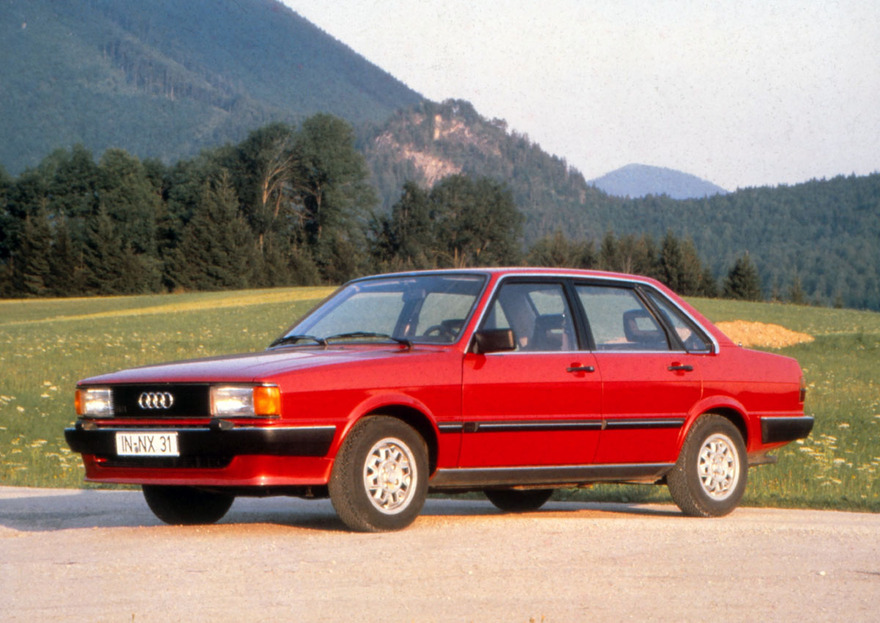
40 years ago, the brand introduced the first Audi five-cylinder petrol engine, which was equipped with the Audi 100 second generation. This was followed by various modifications and new designs: turbocharged, exhaust gas cleaning system, four valves per cylinder, as well as engines for rally models and diesel five-cylinder engine. Today, the glorious tradition of five-cylinder powertrains continues to drive 2.5 TFSI, mounted on the Audi RS 3 Sportback and the Audi TT RS.

Audi five-cylinder engines have already gained cult status — like thanks to their successful use in motorsports, as well as for their reliability and efficiency. They provide much of the same «Vorsprung durch Technik» (Vorsprung durch Technik), and up to now continue to provide great emotions driving, emphasizing them with his characteristic sound.
The first five-cylinder petrol engine was installed on the Audi 100 (C2) in 1976. The model with the internal designation «Type 43» was supposed to be positioned in the market above its predecessor. According to the developers, while to solve a similar problem using four-cylinder engine, it was impossible. In the early 1970s, Audi engineers have regularly discussed the possibility of the use of five- and six-cylinder in-line engines. However, from the six-cylinder engines it had to be abandoned because they require considerable space for installation and adversely affect the distribution of mass in the car. It is a reasonable bet has been made on the five-cylinder in-line engine, which was based on a new engine while the concept of EA 827. In the seventies, this four-cylinder engine is widely used in the Volkswagen Group, for example — for the Audi models Audi 80 and 100. Built on its base five-cylinder unit with a displacement of 2.1 liters developed capacity of 136 liters. from. Modern fuel injection system increases as the power characteristics and efficiency of the engine. The first cars Audi 100 5E were handed over to customers in March 1977.
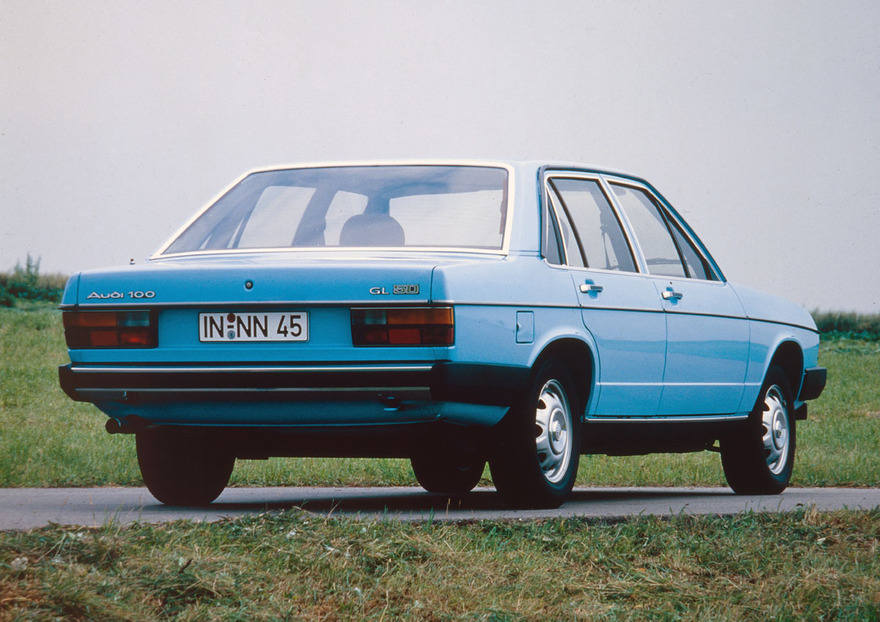
Already in 1978, the Audi brand has been presented the first diesel version: naturally aspirated engine with a displacement of 2 liters, which had capacity of 70 liters. from. A year later the debut of the first five-cylinder turbocharged petrol engine, which was another groundbreaking achievement Audi. Developing the capacity of 170 liters. from. and having a torque of 265 Nm, it was used on the new top model in the lineup — Audi 200 5T.
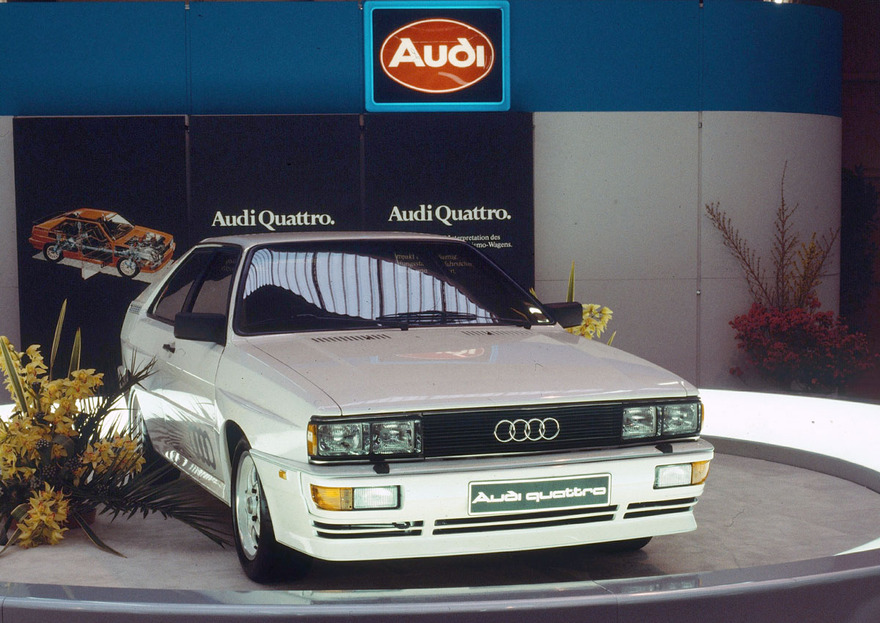
Introduced in 1980 on the car Audi «Ur-quattro» five-cylinder gasoline engine has an even more impressive performance. With turbocharged with intercooler (intercooler) and working with the permanent all-wheel drive — he presented himself as a powerful solution for use on public roads and in the races. Initially, its capacity is 200 liters. from. In 1983, the Finnish driver Hannu Mikkola (Hannu Mikkola) at this car won the title of Champion of the World Rally. In the same year, Audi introduced a version of the Audi Sport quattro, differed extended track and the former by 24 cm shorter. Under its hood was installed a new 306-horsepower five-cylinder engine with four valves per cylinder, in which the aluminum structure was used.
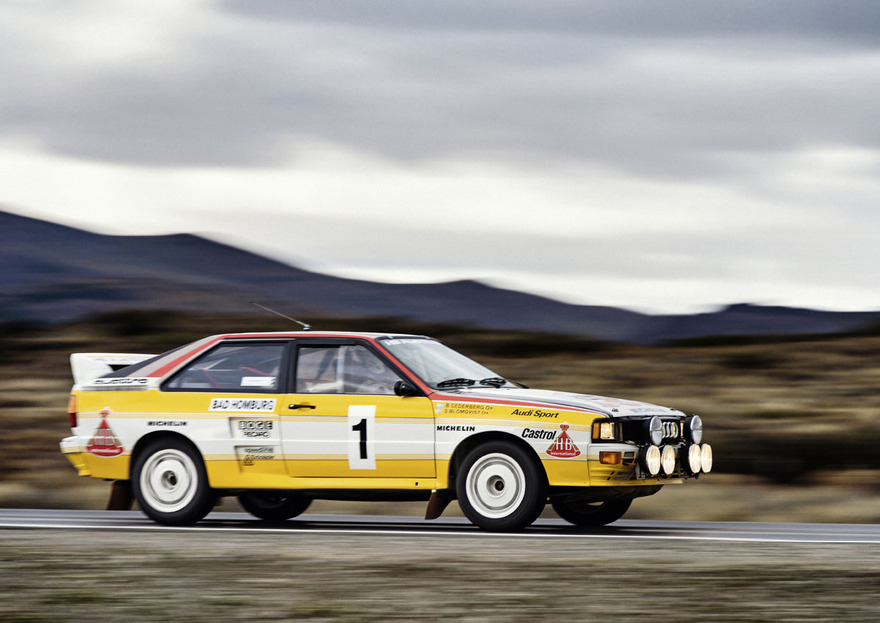
Thanks to this engine model Audi Sport quattro became at that time the most powerful car ever offered by the German brand for use on public roads. This model was the basis of the new rally car «Group B», in which the engine with four valves per cylinder immediately achieved returns of 450 liters. from. It was first used on the penultimate stage of the 1984 season — Ivory Coast rally («Rally Ivory Coast»). On the other eleven stages of the season, the Swede Stig Blomqvist (Stig Blomqvist) brings to the start of another car «group B» — 360-hp Audi quattro A2. As a result, the Swede became the world champion in the standings pilots, and Audi won the championship in the manufacturers standings.
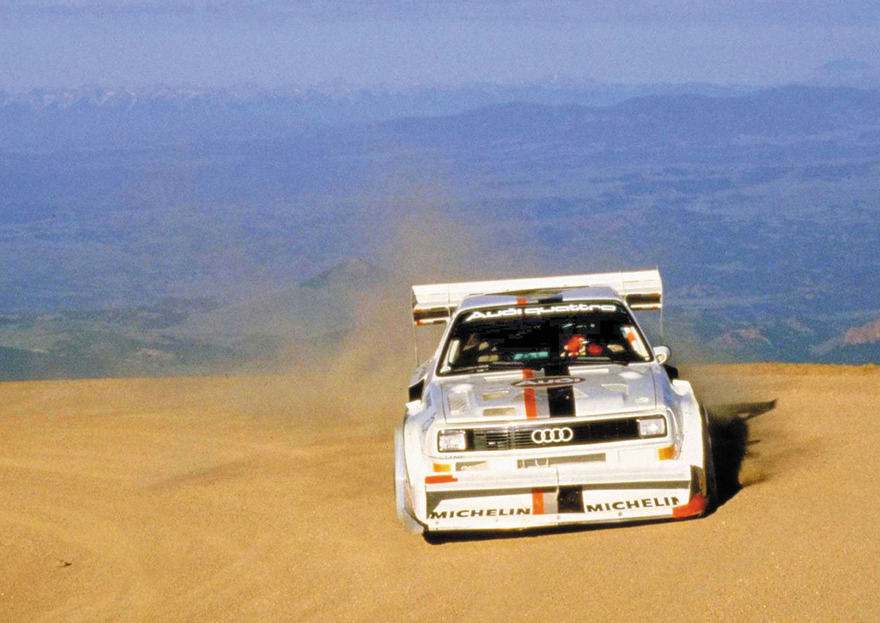
After the 1986 Audi left the rally competitions, followed by other significant events on the racetrack. In 1987, Walter Röhrl (Walter Röhrl) car Audi Sport quattro S1 (E2) won the famous mountain race Pikes Peak in the USA. The power of his car was 598 liters. from. In 1989, the great results in the American racing touring car model showed IMSA-GTO, which had a capacity of 720 liters. from. the engine working volume only slightly larger than two liters.
Another milestone in the history of the automotive industry was the presentation at the International Motor Show in Frankfurt (IAA) in 1989 model 100 TDI Audi. It was the first production car equipped with a five-cylinder turbo diesel with direct fuel injection and fully electronic engine management system. The engine had a 2.5-liter capacity of 120 liters. from. And continued improvement of the line five-cylinder petrol engines Audi. In 1994, the market went Audi RS 2 with an engine capacity of 315 liters. from. In the version of the Avant — combining body «wagon» with the power of a sports car — he laid the groundwork for the emergence of a new class of vehicles.
In 1994, to the launch of Audi A4 (B5) model, five-cylinder engine left the segment B. In the mid-1990s, they were replaced gradually come to new V6 units. The last sets of five-cylinder engines have become 2.5 TDI in the Audi A6 2.3 Turbo models, and on Audi S6. They gave way to a successor in 1997.
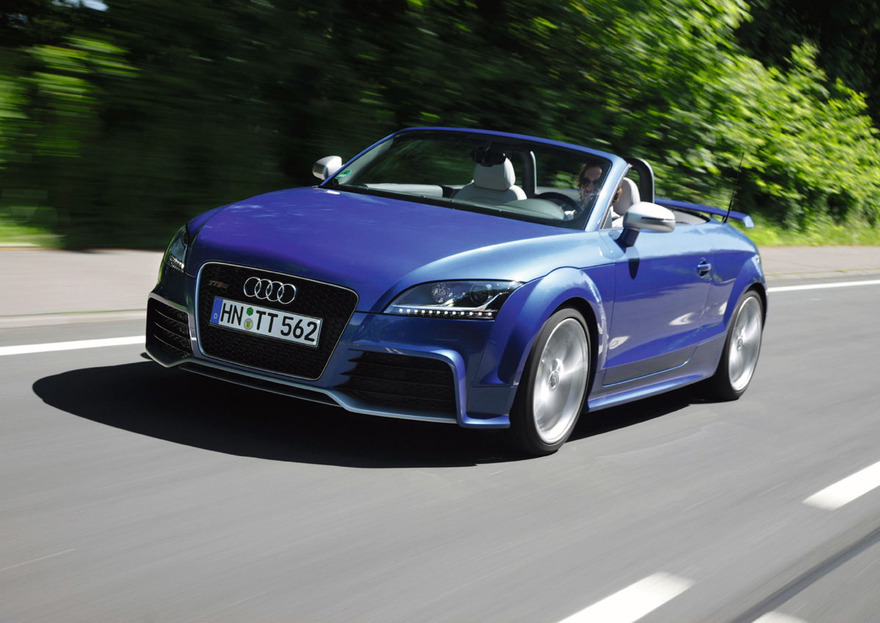
In 2009, there was the triumphant return of this type of engine: equipped with a turbocharged petrol engine with direct fuel injection appeared on the model Audi TT RS. Developed by quattro GmbH service had a working volume of 2.5 liters, developed capacity of 340 liters. from. and it was installed transversely. The same engine is provided and excellent dynamics models Audi RS 3 Sportback and Audi RS Q3. Model Audi TT RS plus, presented by Audi in 2012, raised the power bar up to 360 l. from. The engine 2.5 TFSI, which is installed on the Audi TT RS today — already develops capacity of 400 liters. from. An international jury of automotive journalists, starting in 2010, this five-cylinder unit conferred the title of «Engine of the Year» (Engine of the Year) in class seven times in a row.

Today is the first car with the Audi five-cylinder engine can be seen in the exhibition hall of the Audi Forum in Neckarsulm (Neckarsulm). In «From zero to hundred» historic car exhibition features numerous exhibits, through which you can get acquainted with the exciting history of Audi. Here is also one of the first instances of five-cylinder diesel engine TDI, is installed on the Audi 100 1989 year. The exhibition is open until November 6, 2016.









